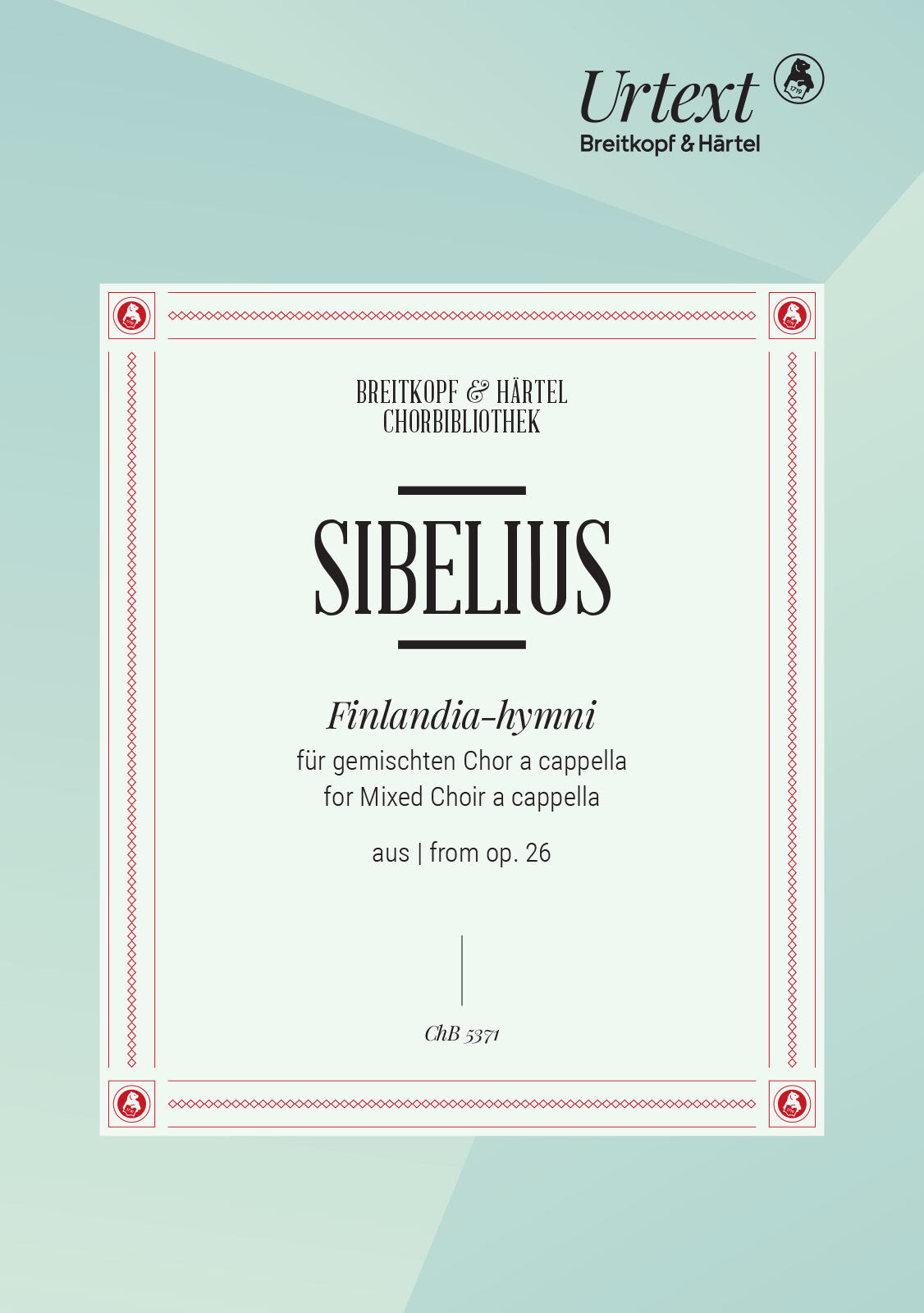Sibelius: Finlandia Hymn
In stock and typically ships within 1 business day.
Minimum Order Qty: 20
- Composer: Jean Sibelius (1865-1957)
- Editor: Sakari Ylivuori
- Instrumentation: SATB Choir
- Work: Hymn on a Theme from Finlandia, Op. 26bis
- Work Language: Finnish
- ISMN:
- Size: 7.5 x 10.6 inches
- Pages: 4
- Urtext / Critical Edition
Listen on Soundcloud
Description
The hymn from the tone poem Finlandia, Op. 26 for orchestra, one of the best-known works of Jean Sibelius, became the unofficial national anthem of Finland with the text of Veikko Antero Koskenniemi (1906–1962). in a time of great insecurity after the attack of the Soviet Union in 1939, Koskenniemi managed to capture the rising national consciousness and the hope of the Finns for an imminent solution of the conflict. Sibelius had already written an arrangement of the hymn for male choir on a different text in 1938, but after a suggestion by his publisher Roger Lindberg, he decided to write a version for mixed choir, too, on the by now better known text by Koskenniemi. This version in F Major was published in 1949, but at Breitkopf & Härtel only with a German translation by Hellmuth von Hase.
The Finlandia-Hymn with the Finnish text by Koskenniemi is therefore now available at Breitkopf & Härtel for the first time, as Urtext of the complete edition Jean Sibelius Works. The edition includes both the version in F Major as well as a second version in A-flat Major, written by Sibelius himself, too, but until now unpublished outside of the complete edition.
- Finlandia-hymni in F Major | (2')
- Finlandia-hymni in A-flat Major (alternative version) | (2')
Publishers use a lot of words to describe what they sell, and we know it can be confusing. We've tried to be as clear as possible to make sure you get exactly what you are looking for. Below are descriptions of the terms that we use to describe the various formats that music often comes in.
Choral Score
A score for vocalists that only contains the vocal lines. The instrumental parts are not there for reference. Generally, cheaper than a vocal score and requires multiple copies for purchase.
Facsimile
Reproductions of the original hand-written scores from the composer.
Full Score
For ensemble music, this indicates that the edition contains all parts on a single system (there are not separate parts for each player). In larger ensembles, this is for the conductor.
Hardcover
Hardbound. Generally either linen-covered or half-leather.
Orchestral Parts
Similar to a wind set, this is a collection of parts. In the case of strings, the numbers listed are the number of copies included, though generally these are available individually (often with minimum quantities required).
Paperback
When publishers offer multiple bindings (e.g. hardcover) or study scores, this is the "standard" version. If you're planning to play the music, this is probably what you want.
Performance / Playing Score
A score of the music containing all parts on one system, intended for players to share. There are not separate parts for each player.
Set of Parts
For ensemble music, this indicates that there are separate individual parts for each player.
Solo Part with Piano Reduction
For solo pieces with orchestra, this is a version that contains a piano reduction of the orchestra parts. For piano pieces, two copies are typically needed for performance.
Study Score
A small (think choral size) copy of the complete score meant for studying, and not playing. They make great add-ons when learning concertos and small chamber works.
Vocal Score
A score prepared for vocalists that includes the piano/organ part or a reduction of the instrumental parts.
Wind Set
For orchestral music, this is a collection of wind and percussion parts. The specific quantities of each instrument are notated.
With Audio
In addition to the printed music, the edition contains recordings of the pieces. This may be an included CD, or access to files on the internet.
With / Without Fingering (Markings)
Some publishers prepare two copies - a pure Urtext edition that includes no fingering (or bowing) suggestions and a lightly edited version that includes a minimal number of editorial markings.


